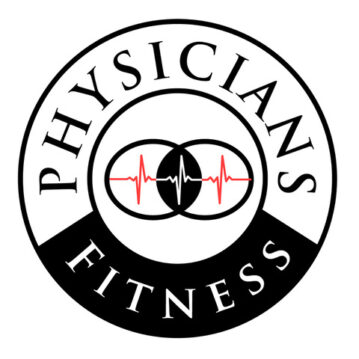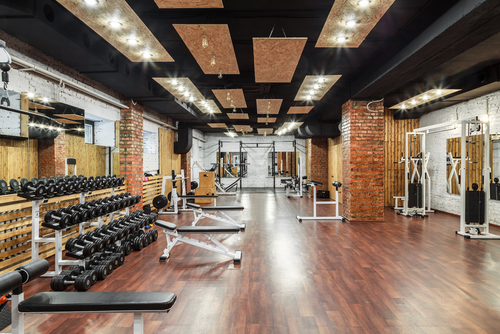Co-Authored by Jay Weitzner and Greg Mack, Certified Medical Exercise Specialists, Certified Muscle System Specialists
You walk in the door and scan the landscape; A solemn waiting room with lots of neatly aligned chairs, a TV tuned to a channel no body cares about, and a whole bunch of old and worn magazines from 2011.
A front desk behind a window with a disinterested receptionist and a sign instructing you to sign in and wait to be called. Oh, and another sign that states your co-payment must be collected today.
Someone announces your name and beckons you to come in through the big door at the end of the waiting room.
Behind the big door you walk past rooms with high tech equipment, medical tools, and those cold tables with the white paper wrapped around them.
Practitioners wearing white coats, or button-down shirts with ties, dart in and out of rooms and around corners with large files in their arms.
It’s an image most of us recall when it is time to go and have the pains in our hips, knees, ankles, back – any body part for that matter – that needs checked out. This is how it’s always been. In fact, any other office environment, that doesn’t fit the previous description, couldn’t be the right place – could it? After all, when you want to see someone (that the insurance company pays for) that helps you with your pain and suffering, that’s what the physical landscape looks like. There is a strong association between how a place needs to look and the process for helping you. This association needs to be challenged. Why? Because it’s called the fallacy of association bias, and it could be unnecessarily limiting your choices and decision opportunities.
We suggest a reevaluation of what a “help your body” landscape should look like. It just may look more like a gym than a medical therapy room.
When you conclude and use the word “pain” to describe your physical sensation, it is often accompanied by a limitation in how well you move your body. You think the pain is the problem, so you seek someone to get rid of your pain. There is no shortage of people willing to try and do so. There are two things in common with many practitioners that try to get rid of your pain. First, many subscribe to the body view that a local sensation (pain in a specific location) means there is a local problem (where it hurts must be where the problem is) and therefore a local intervention is required (something must be done to that area). Here are some examples: Your shoulder hurts in the front so they rub the front of your shoulder. Your back hurts so they stretch your back. Your knee hurts so they inject something into your knee. Your thigh hurts so they put a vibrating tool on it. Second, most of these places fit the description previously described – medical office space, white coats, doors with file folders on them, syringes, massage tables, etc. The landscape and the tools in it fit the way they think about your body.
As previously stated, when you’re in pain you may not move your body as well as if you weren’t in pain; and you think the pain is the problem, therefor you seek someone to get rid of your pain. Sometimes that works. Sometimes going to the places that have the landscape of therapy may work. Your pain goes away and you start moving better. There are certainly times when looking at the spot that hurts makes sense – impact injuries, cuts, sores, and local diseases are great examples. But when some specific event can’t be directly blamed for the pain then things get a bit iffy.
As Certified Muscle System Specialists, we look at things very differently. Instead of thinking the Pain is responsible for your limitation on movement, we look at the system responsible for moving you – the muscle system. If your muscles aren’t operating properly (via the quality of contraction), you won’t move well. If you aren’t moving well then you may experience a sensation you call pain. So our job is to identify those aspects of your muscle system that are low quality, so we can work together to improve that quality. This may help you move better and then feel better. We flip the script.
Improving your ability to control your body, via your muscles, just may reduce pain and other sensations that you don’t like.
What might you expect the landscape where the professionals that help you do so by working on your muscle system? No one may be wearing a tie. There certainly won’t be a white coat. The facility will likely have a table for you to lie on, as that’s often where the work begins. The big difference? You’re going to find a lot of exercise equipment that you’d expect to find in a traditional gym – machines, dumbbells, treadmills, and cable machines. Etc. Why? Remember the goal. The job is to improve your muscle system, the system that moves you; helps you walk stairs, get up from a chair, get up and down off the floor, helps you swing the club or racquet, and helps you ride a bike or to swim. The job is to improve your muscle system so it can better handle the forces on your body so you can do more things easily, use your body, remain active, and move better. The better muscles can initiate and control your movement, the less likely you are to feel pain. As you begin to move and control your body better (and your system stops needing to conclude pain) you can slowly, strategically, and progressively begin to increase the forces on your body with a variety of “gym-type” equipment so you can be more physically resilient. This is why one of the new landscapes for helping you with pain, and other physical sensations that you don’t like, may not look like how you think it should.
So the next time you find yourself not feeling much better by going to the same old places and doing the same old things, don’t be surprised when you finally choose a Certified Muscle System Specialist to help you, and the landscape looks a lot like a gym rather than a medical therapy office.
There is a new landscape for helping you meet your health challenges.
Don’t be deceived.
If you're interested in learning more about how a Certified Muscle System Specialist™ can help you move better, feel better, and live better, click here.
To find a Certified Muscle System Specialist™ near you, see our list of practitioners throughout the U.S. and Canada.
If you're an exercise professional who is interested in learning more about how to become a Certified Muscle System Specialist™, visit us at www.exerciseproed.com.


Recent Comments